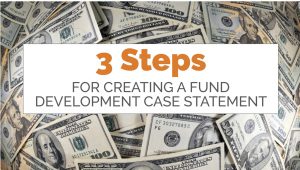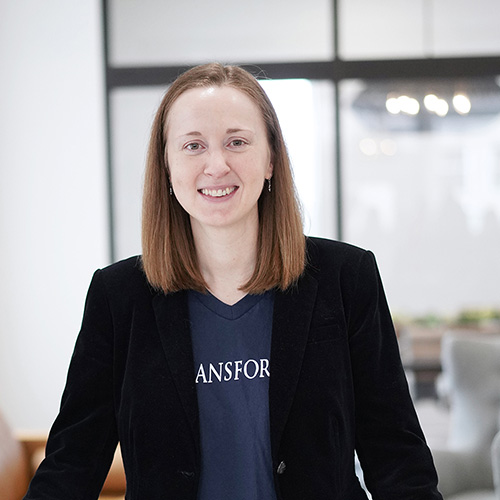A fund development case statement is a broad three- to five-page overview of your nonprofit organization that highlights who you are and what sets you apart from other similar nonprofits. Your case statement sets a foundation for grant applications and donation requests.

At Transform Consulting Group, we use 3 steps when partnering with organizations to create a fund development case statement. We recently used these steps to develop a case statement for the Johnson County Learning Center (JCLC): Early Learning Community. JCLC provides early childhood education for families in Johnson County. Right now, they are seeking to increase their overall funding and diversify their funding streams. They are new to fund development, so one of our solutions was to help develop their case statement.
Step 1: What is the Need?
Address the compelling need for your organization or cause. Why do you exist? What happened to spark the founding of the organization? Why do you continue to operate? What problem(s) in particular are you working to solve? Consider the following:
-
- Demographics: Who is your target population? What are some key data points that characterize them and demonstrate their unmet need?
- Services: Is there a lack of services like yours? Are you filling a critical gap? Do you provide speciality services that are needed and missing?
- Research: What does the literature say about why your work matters? What studies have been done that demonstrate the importance of your work and cause?
Tip: Use available, relevant information. Perhaps organizations in your community or region have conducted needs assessments. For state and national data sources, check out our blog.
For JCLC’s case statement, we used Census data to help funders and donors get a sense of the community’s demographics. Since they work in the early learning and education industry, we pulled data from the Indiana Early Learning Advisory Committee’s (ELAC) county profiles and interactive dashboard and the Indiana Department of Education.
Step 2: What are You Currently Doing?
Address what you are currently doing to meet the need. How does your organization fill the existing gap in your community? Consider the following:
-
- Programming: What are the programs and services that you offer? What makes them uniquely effective?
- Impact: What are your results and accomplishments, including the numbers served and outcomes? What positive trends or recent changes have you identified?
- Stories: Who can tell personal stories about the positive impact of your organization in their lives?
Tip: Use existing language from your website, annual report, and newsletters.
JCLC had already developed content for their website to communicate their mission and programming. In addition, they pulled some data reports to provide more detail about their reach and partnerships. We were able to use their existing language and data as a foundation for their fund development case statement.
Step 3: What are Your Plans for the Future?
Address what else you hope to accomplish that will better meet the need of your target population. This is why you are asking for grant funding. Consider the following:
- Unmet Need: Why do you want this grant funding? Is there a population or geographic area you are unable to serve?
- Your Case: How is what you are currently doing (while great) not enough to meet the compelling need? What are your limitations?
- Your Proposal: How would you use the funding in order to meet the need?
- Expand Services: Is the need overwhelming and you need to serve more?
- Enhance Services: Do you need to refine your services or programs in a particular way, such as specializing or retooling them to meet the needs of the target population?
- Launch New Services: Do you need to start something new to fill a gap, perhaps based on new research; a new community needs assessment; or a changing target population?
Tip: There’s no need to start from scratch if you don’t have to! Consider if you have written similar information for other grants or reporting requirements. More than likely you have this information in multiple places and just need to thoughtfully pull it together.
Data from ELAC and Child Care Aware of America shows that in Johnson County, there are many families who cannot afford the cost of early childhood education. At the same time, a growing body of research shows the positive impact for children, especially low-income children, attending a high-quality early education program. These children can achieve positive academic, social, and economic outcomes (ELAC Annual Report, 2018). There is a need for community investment to create a more robust scholarship program that would help make sure all families can access the education needed for their youngest children. Now, JCLC will share this data with local funders to seek the specific dollar amounts necessary to increase the number of children served by their scholarship program.
If your nonprofit needs to seek additional funding or you would like help reviewing or creating a fund development case statement, contact us today to get your organization on the way to financial strength and sustainability!

